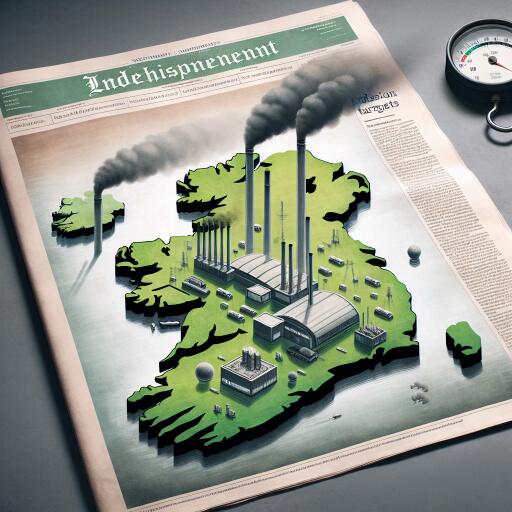
Ireland’s Uphill Battle with Emissions Targets: A Closer Look at EPA’s Projections
Despite concerted efforts to pivot towards sustainability, Ireland’s journey to meet its greenhouse gas emissions reduction targets is facing significant challenges. A sobering analysis by the Environmental Protection Agency (EPA) reveals that the nation is on course to fall short of its ambitious goals, even in the most favorable scenarios.
The quest for a greener Ireland is framed by two primary objectives. At the national level, the Climate Act of 2021 outlines a vision to slash emissions by 51% by 2030, using 2018 figures as a benchmark. Meanwhile, broader commitments at the European level require Ireland to cut its emissions by at least 42% by 2030, in comparison to 2005 levels. These targets are not just lofty ideals but are integral to Ireland’s compliance with European Union (EU) environmental mandates, which allow for certain flexibilities including the purchase of “allowances” from overachieving countries and credits through land use and forestry initiatives.
Despite these mechanisms, Ireland’s trajectory towards its EU emissions target is veering off course. The EPA stresses that even if Ireland maximally leverages these EU flexibilities, the gap between current progress and required benchmarks remains dauntingly wide.
The EPA’s scrutiny unfolds across two scenarios: one that assesses the impact of existing environmental measures and another, more optimistic, that presumes the full realization of policies laid out in the Climate Action Plan yet to be executed. Under the most hopeful projections, Ireland is poised to achieve only up to a 29% reduction in emissions by 2030 compared to the baseline year of 2018. This shortfall starkly contrasts with the national goal of a 51% reduction.
The discrepancy is even more pronounced when evaluating Ireland’s adherence to EU targets. The projected reduction stands at a mere 25% from 2005 levels, which is significantly lower than the required 42%. This is a downward adjustment from previous estimates, illustrating a trend where actual progress lags behind anticipated outcomes.
These projections cast a shadow over nearly every sector of the Irish economy, with agriculture, industry, and electricity generation marked as the most significant contributors to the overshoot of government-set emission ceilings for 2030. A particular concern is the land use sector, where emissions are expected to climb sharply due to increased forestry harvesting, thereby turning a potential carbon sink into a carbon source.
The EPA’s appraisal does not merely enumerate challenges; it spotlights the urgency for actionable change. Laura Burke, the EPA’s director-general, underscores that the present suite of policies and plans, while ambitious on paper, markedly underdeliver in practice. She calls for a tangible acceleration and amplification of efforts to bridge the yawning gap between ambition and reality.
Significantly, the EPA has opted to exclude certain policies from its analysis due to vagueness around implementation feasibility, especially those related to ambitious targets for renewable energy generation like wind and solar power. The report also signals a need for clearer strategies in agriculture, particularly the implications of proposed livestock diversification, hinting at a potential reduction in herd sizes that could alter the emissions landscape considerably.
Another area of contention surrounds the 26 million tonnes of emissions “savings” purported in Climate Action Plans that remain inadequately detailed for inclusion in the EPA’s projections. This omission signals a critical need for more precise, actionable strategies from the government to navigate towards the 2030 targets successfully.
In conclusion, the EPA’s revelations are a clarion call for reinvigorated efforts at every level of government and society. While Ireland’s green aspirations remain noble, the pathway to achieving them is fraught with challenges. Addressing these challenges head-on, with detailed plans and unwavering commitment, is imperative for Ireland to fulfill its environmental stewardship role on the European and global stage.





Leave a Reply